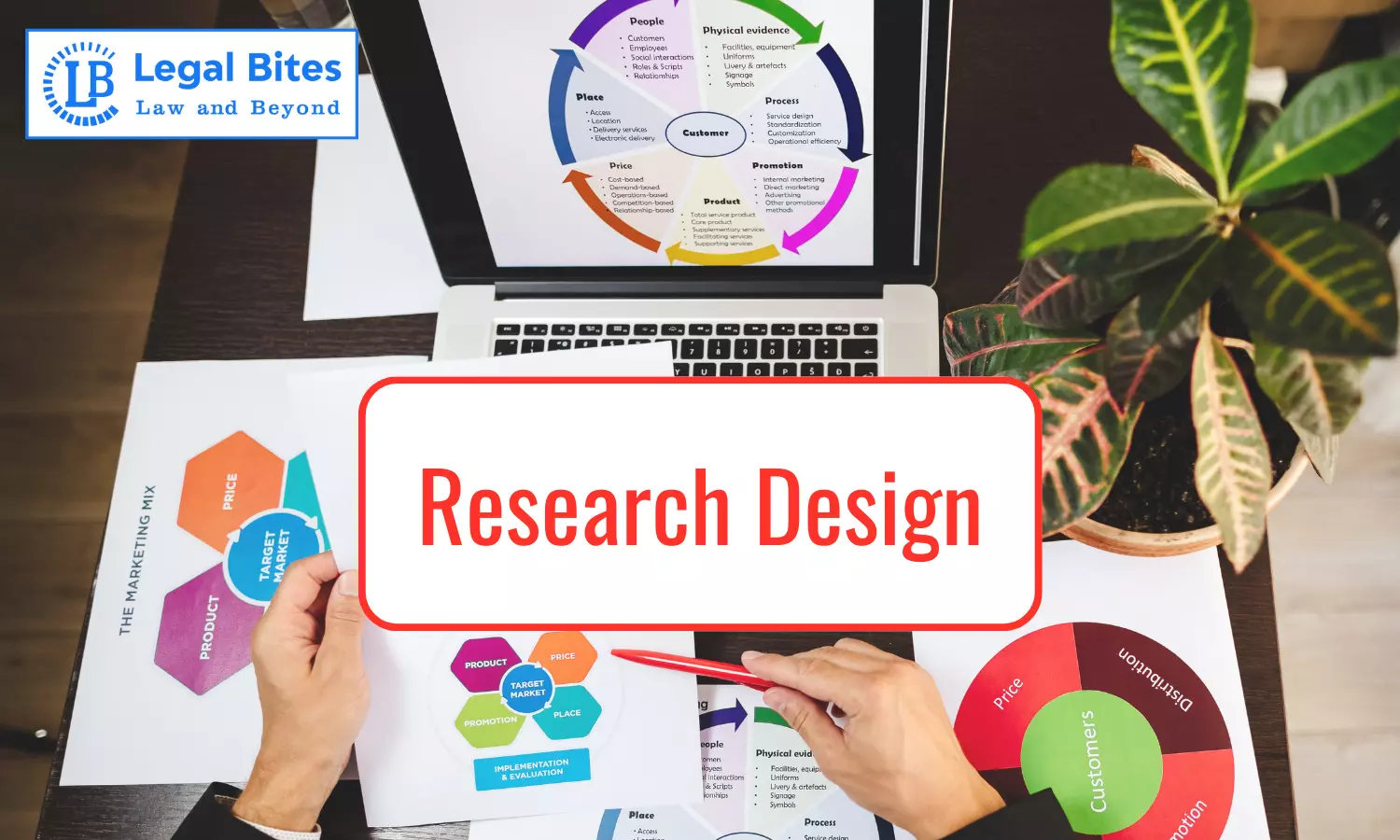Research Methodology: Research Design
The article 'Research Methodology: Research Design' defines research design and explores different aspects of research design to take into account while conducting any research project or study.

The article 'Research Methodology: Research Design' defines research design and explores different aspects of research design to take into account while conducting any research project or study. Any project or study has an organizational structure and data-gathering strategy, which is referred to as the research design. Understanding the different sorts of research designs that are accessible for use in your research is essential if conducting research is your line of work.
Introduction
A systematic approach or concept used to carry out several activities for a research study is known as a research design. For the researcher to carry out the task in an appropriate manner, it is crucial to understand the research design and its forms. The goal of research design is to provide the researcher with the tools necessary to move forward successfully and without deviating from the duties. It is a comprehensive, in-depth research process strategy. A research study's experiment design is a crucial component. A bad research design could cause the entire project to run beyond budget, manpower, and time.
Major Contents of Research Design
Depending on the field, a research design's priority can change, but it majorly includes the following:
- Research Questions and/or Hypothesis
- An overarching strategy can either be qualitative or quantitative.
- The design approach of the research study can either be a survey, experiment, or case study.
- Sample selection criteria or sampling techniques in the research study
- The techniques for gathering data such as questionnaires, observations etc.
- Methods for collecting data such as operationalization, timing and data management etc.
- Approaches to data analysis can either be statistical tests or thematic analyses.
Types of Research Design
In totality, the types of research design can be divided into 5 categories. Let us comprehend each one of them:
1. Descriptive research design
The researcher thoroughly depicts the scenario in their study materials when using a descriptive research design. This kind of research design is entirely theoretical, with the researcher gathering data, processing it, organising it, and then clearly presenting it. It is the type of study design that is the most open-ended. A descriptive design may make use of a variety of research methods to investigate one or more variables. In contrast to experimental research, the researcher in a descriptive study approach simply observes and assesses the variables without changing or controlling any of them. In other words, even though descriptive research can also be used in qualitative studies, descriptive research methods are often thought of as a subset of quantitative studies.
2. Experimental Research Design
A research design is known as experimental research when uses two sets of variables and a scientific methodology to conduct the investigation. The deviations in the second set are compared to the first set as a reference standard. For instance, quantitative research approaches often involve experimentation. If your conclusions are not supported by enough evidence, you must first establish the facts. Data is gathered during an experimental study to help you form more accurate conclusions. All research carried out in environments that are scientifically appropriate uses experimentation. Researchers must confirm that a variable change is only caused by altering the constant variable for experimental studies to be effective. There should be a clear cause and effect identified by the investigation.
3. Correlational Research Design
Without allowing the researcher to influence or change any of the variables, a correlational research design examines the relationships between them. Studies of correlation show the strength and/or direction of a relationship between two (or more) variables. Studies that use correlational analysis may have a positive, negative, or zero correlation. The correlational research design is excellent for quickly gathering data from unstructured environments. This enables you to legitimately and externally apply your findings to actual situations.
4. Diagnostic Research Design
A sort of research design known as a diagnostic research design aims to discover the underlying causes of a specific ailment or phenomenon. It can help you gain more knowledge about the factors that lead to particular problems or issues that your clients could be facing. Three research steps commonly comprise this design, and they are as follows:
- The inception of the issue
- Diagnosis of the issue
- Solution for the issue
5. Explanatory Research Design
Explanatory research is a technique created to investigate phenomena that have not before been studied or well explained. Its main objective is to let us know where we can find a small amount of information. Using this approach, the researcher gains a comprehensive understanding and uses research as a tool to help them find issues that could be handled in the future more rapidly. Its goal is to ascertain the subject under investigation, why and what. In a nutshell, it is a form of study design that establishes cause-and-effect links to determine the why of the events.
Utility of Research Design
By focusing on the research problem, anyone can determine the unique subject or knowledge gap that his/her research seeks to address. In the introduction to a research study, researchers typically state their study question and choice of research design. There are various utilities of Research Design such as:
- Making the right choices at every stage of the study is made easier by creating a research design.
- It aids in determining the study's major and minor responsibilities.
- Including minute details at each stage of the research process, it enhances the research study's effectiveness and interest.
- A researcher can quickly define the goals of the study project based on the experiment design (research design).
- A good research design makes it easier for the researcher to find the best solution to the research problems and to complete the study's objectives in the allotted time.
- It enables the researcher to carry out all tasks more effectively, even with limited resources.
- The fundamental benefit of a good research design is that it gives the study validity, accuracy, and reliability.
Conclusion
A design can mean several things. But, in terms of the topic at hand, it is a structure or a breakdown of how a research project operates. It is the statement of essential elements of a study that provides basic guidelines for conducting the project. It is similar to an architect's blueprint.
A general plan or model that specifies how the complete research endeavour would be carried out is analogous to the research design. Therefore, it should always be preferred that it shall be in writing and that it shall be concise and properly explained.
References
[1] R Jang, General purpose of research designs, Available Here
[2] Research Design, Available Here
[3] Research Design: Meaning and Importance, Available Here
[4] Jongbo O.C., The Role of Research Design in a Purpose Driven Enquiry, Available Here

